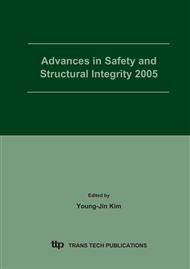p.9
p.15
p.23
p.31
p.39
p.45
p.55
p.63
p.71
Structural Stress Based Fatigue Life Evaluation for Heat Exchanger Motor Operated Valve
Abstract:
In ASME Sec. III ‘design by analysis’ approach, stresses are generally calculated by finite element method and compared to corresponding stress limits after categorizing those components. However, in order to obtain optimum results, time consuming and expensive manipulations are required owing to its mesh size dependency and complicate stress categorization. In this paper, a new approach based on structural stress is proposed to resolve the issues and applied to a heat exchanger motor operated valve. At first, the technical bases and specific features of structural stress approach are briefly discussed. Secondly a series of finite element analyses are carried out to show the limitations of current ASME approaches and to get basic data for the proposed approach. Finally, a structural stress concentration factor of motor operated valve is determined after comparison of local stresses and structural stresses, and utilized for fatigue life evaluation. Since the results show a promising applicability, it seems that the structural stress based approach can be utilized for fatigue life evaluation of components with complex geometries.
Info:
Periodical:
Pages:
39-44
Citation:
Online since:
March 2006
Authors:
Price:
Сopyright:
© 2006 Trans Tech Publications Ltd. All Rights Reserved
Share:
Citation:


